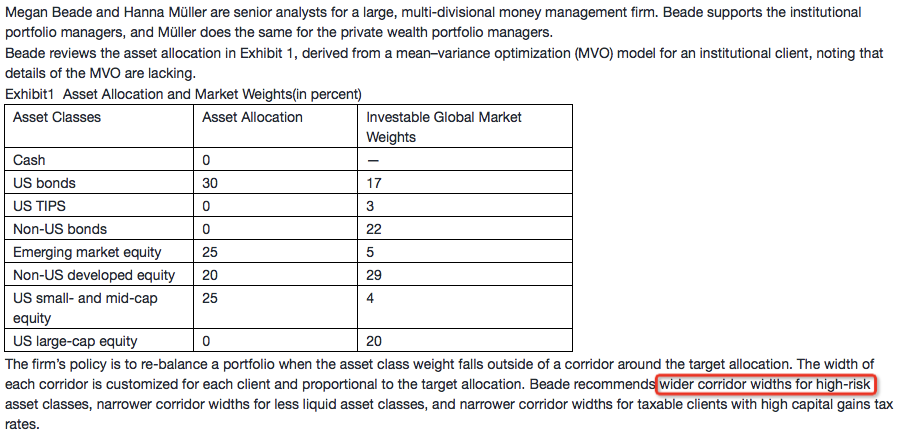NO.PZ201803130100000102
问题如下:
For clients concerned about rebalancing-related transactions costs, which of Beade’s suggested changes in the corridor width of the rebalancing policy is correct? The change with respect to
选项:
A.high-risk asset classes.
B.less liquid asset classes.
C.taxable clients with high capital gains tax rates.
解释:
A is correct.
Theoretically, higher-risk assets would warrant a narrow corridor because high-risk assets are more likely to stray from the desired strategic asset allocation. However, narrow corridors will likely result in more frequent rebalancing and increased transaction costs, so in practice corridor width is often specifed to be proportionally greater the higher the asset class’s volatility. Thus, higher-risk assets should have a wider corridor to avoid frequent, costly rebalancing costs. Her other suggestions are not correct. Less-liquid asset classes should have a wider, not narrower, corridor width. Less-liquid assets should have a wider corridor to avoid frequent rebalancing costs. For taxable investors, transactions trigger capital gains in jurisdictions that tax them. For such investors, higher tax rates on capital gains should be associated with wider (not narrower) corridor widths.
如果考虑交易费用,那都应该是WIDER的,但是文中的high-risk asset并没有WINDER的







